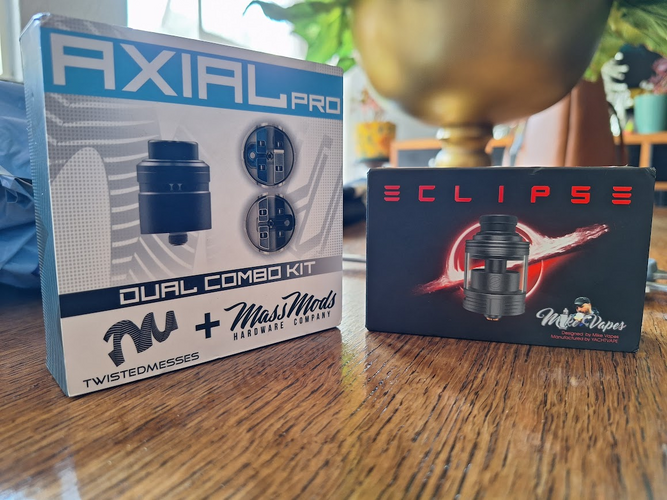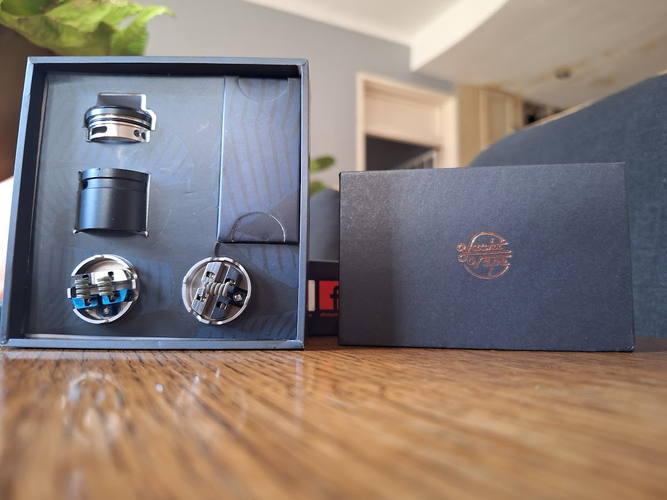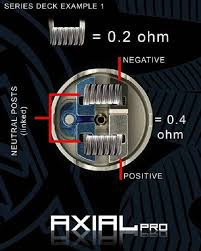Hey folks!

So, I’ve heard it time and time again: “You gotta understand Ohm’s Law if you’re gonna build or install coils.” But, does anyone ever really take the time to break it down for us? Nah, they just throw some formulas at us and walk away. Well, fear not, because your buddy Old Goat is here to make this as simple and relatable as possible.
Let’s dive in, shall we?

The formula is: V = I x R
Or, more practically for us:
Scenario 2: Low resistance, big current. Now, you’ve got a fire hose with high water pressure. Lots of water (vapor) coming through, but if your pressure is too high, that hose (coil) might burst.
P (Wattage) = V (Voltage) x I (Current)
In our world, wattage determines how hot your coil gets and, consequently, how much vapor and flavor you’ll produce. More wattage usually means more heat, more vapor, but it also means you need to be more cautious with your builds.
Using V = I x R:
4.2V = I x 0.2Ω
Solving for current (I), we get:
I = 4.2V / 0.2Ω = 21 Amps
That’s a lot of current! Make sure your battery can handle it. If your battery’s maximum discharge is 20A, you’re pushing it right to the limit. Be careful!
Go out there, build safely, and keep chasing those clouds.

Feel free to ask any questions or share your experiences. Let’s keep the community informed and safe.
Stay cloudy, my friends!

So, I’ve heard it time and time again: “You gotta understand Ohm’s Law if you’re gonna build or install coils.” But, does anyone ever really take the time to break it down for us? Nah, they just throw some formulas at us and walk away. Well, fear not, because your buddy Old Goat is here to make this as simple and relatable as possible.
Let’s dive in, shall we?

1. What is Ohm’s Law?
Alright, let’s start with the basics. Ohm’s Law is like the holy grail for anyone messing with electricity, and that includes us vapers. It’s a simple formula that helps you understand the relationship between voltage (V), current (I), and resistance (R). Think of it as the golden triangle of vaping—get this right, and you’re in for some seriously good clouds.The formula is: V = I x R
Or, more practically for us:
- Voltage (V): This is the power coming from your mod or battery. It’s like the juice in your vape setup.
- Current (I): This is the flow of electricity through your coil. Think of it like the amount of vapor you’re trying to pull out of that delicious e-juice.
- Resistance (R): This is the opposition to the current in your coil, measured in ohms (Ω). It’s like the barrier your electricity has to pass through.
2. Why Should You Care?
Alright, let’s get real. You might be thinking, “Old Goat, I just want to blow some clouds and taste that sweet, sweet flavor. Why do I need to know this?” Well, here’s the deal:- Safety First: Understanding Ohm’s Law helps you avoid building coils that are too low in resistance, which could potentially overload your battery and cause dangerous situations. We don’t want any exploding mods here!
- Better Performance: Knowing how to balance voltage, current, and resistance helps you get the most flavor and vapor out of your setup without frying your coils or burning your juice.
- Battery Life: You’ll understand how to build coils that won’t drain your battery too quickly. More vape time, less charging!
3. Breaking Down the Formula
Let’s break it down with a simple analogy. Imagine you’ve got a garden hose:- Voltage (V) is the water pressure coming out of the tap.
- Current (I) is the water flowing through the hose.
- Resistance (R) is like the diameter of the hose—smaller hose, more resistance.
Scenario 2: Low resistance, big current. Now, you’ve got a fire hose with high water pressure. Lots of water (vapor) coming through, but if your pressure is too high, that hose (coil) might burst.
4. Let’s Get Practical: Building Coils
When you’re building or installing coils, here’s what you need to keep in mind:- Sub-Ohm Vaping: Anything below 1.0 ohms is considered sub-ohm. This gives you big clouds and intense flavor, but it pulls more current from your battery. Make sure your mod and battery can handle it!
- Higher Ohm Coils: Above 1.0 ohms, you’re looking at less current and less vapor. This is great for mouth-to-lung (MTL) vapers who want a more cigarette-like experience and better battery life.
5. The Power Triangle
We also have another formula called the Power Triangle to understand how much wattage (P) you’re getting:P (Wattage) = V (Voltage) x I (Current)
In our world, wattage determines how hot your coil gets and, consequently, how much vapor and flavor you’ll produce. More wattage usually means more heat, more vapor, but it also means you need to be more cautious with your builds.
6. Practical Example
Let’s say you’ve built a coil that reads 0.2 ohms (R), and you’re using a fully charged battery that puts out 4.2 volts (V).Using V = I x R:
4.2V = I x 0.2Ω
Solving for current (I), we get:
I = 4.2V / 0.2Ω = 21 Amps
That’s a lot of current! Make sure your battery can handle it. If your battery’s maximum discharge is 20A, you’re pushing it right to the limit. Be careful!
7. Conclusion: Vape Safe, Vape Smart
So there you have it, folks! A quick and dirty rundown of Ohm’s Law and why it matters for us vapers. Remember, understanding this stuff not only keeps you safe but also helps you get the best performance out of your gear.Go out there, build safely, and keep chasing those clouds.

Feel free to ask any questions or share your experiences. Let’s keep the community informed and safe.
Stay cloudy, my friends!









